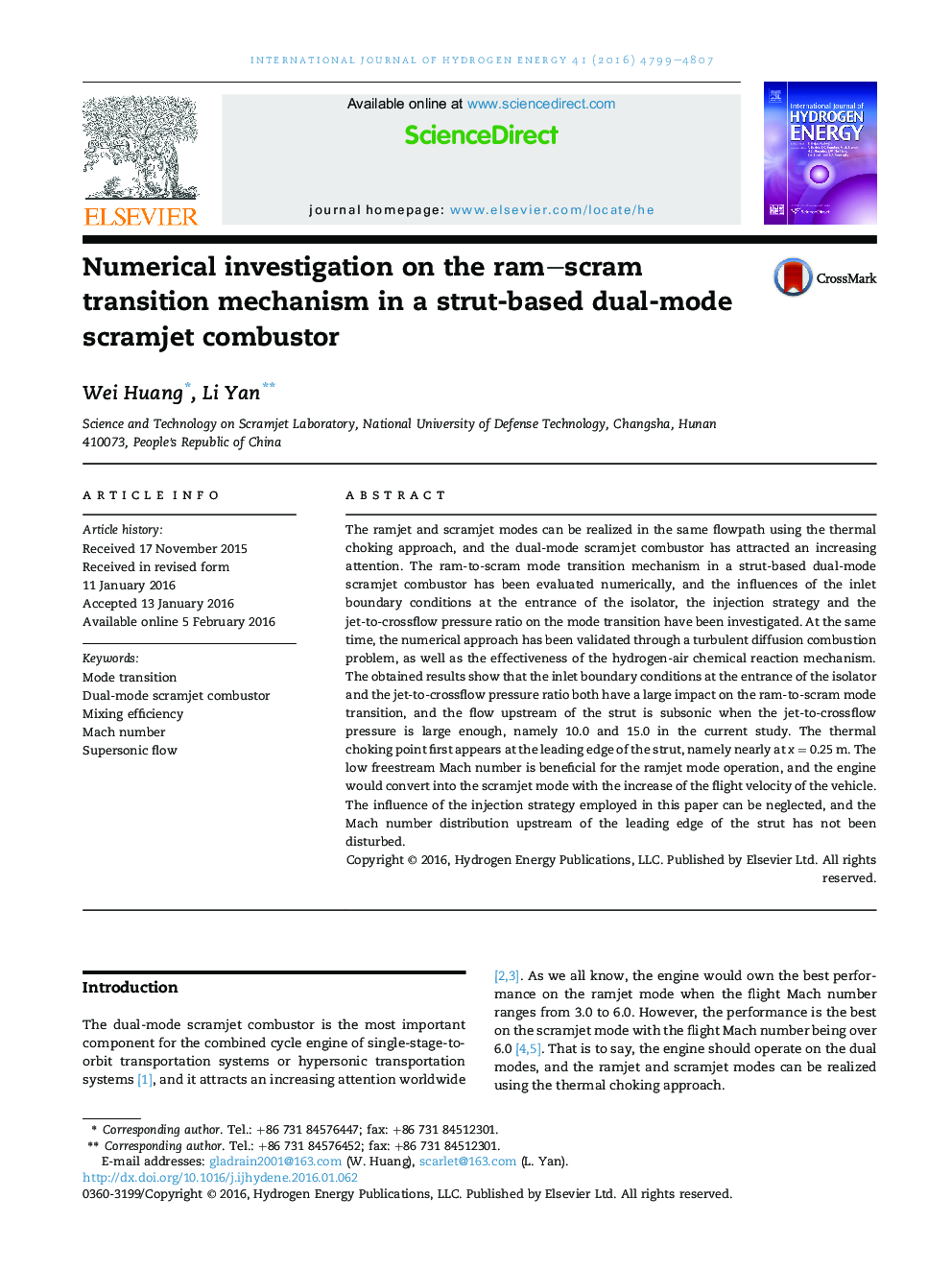| Article ID | Journal | Published Year | Pages | File Type |
|---|---|---|---|---|
| 1271167 | International Journal of Hydrogen Energy | 2016 | 9 Pages |
•Mode transition mechanism in a strut-based dual mode combustor was investigated.•Inlet boundary conditions, injection strategy and pressure ratio effects were evaluated.•Low freestream Mach number is beneficial for the ramjet mode operation.•Jet-to-crossflow pressure ratio is the greatest factor for the mode transition.
The ramjet and scramjet modes can be realized in the same flowpath using the thermal choking approach, and the dual-mode scramjet combustor has attracted an increasing attention. The ram-to-scram mode transition mechanism in a strut-based dual-mode scramjet combustor has been evaluated numerically, and the influences of the inlet boundary conditions at the entrance of the isolator, the injection strategy and the jet-to-crossflow pressure ratio on the mode transition have been investigated. At the same time, the numerical approach has been validated through a turbulent diffusion combustion problem, as well as the effectiveness of the hydrogen-air chemical reaction mechanism. The obtained results show that the inlet boundary conditions at the entrance of the isolator and the jet-to-crossflow pressure ratio both have a large impact on the ram-to-scram mode transition, and the flow upstream of the strut is subsonic when the jet-to-crossflow pressure is large enough, namely 10.0 and 15.0 in the current study. The thermal choking point first appears at the leading edge of the strut, namely nearly at x = 0.25 m. The low freestream Mach number is beneficial for the ramjet mode operation, and the engine would convert into the scramjet mode with the increase of the flight velocity of the vehicle. The influence of the injection strategy employed in this paper can be neglected, and the Mach number distribution upstream of the leading edge of the strut has not been disturbed.
